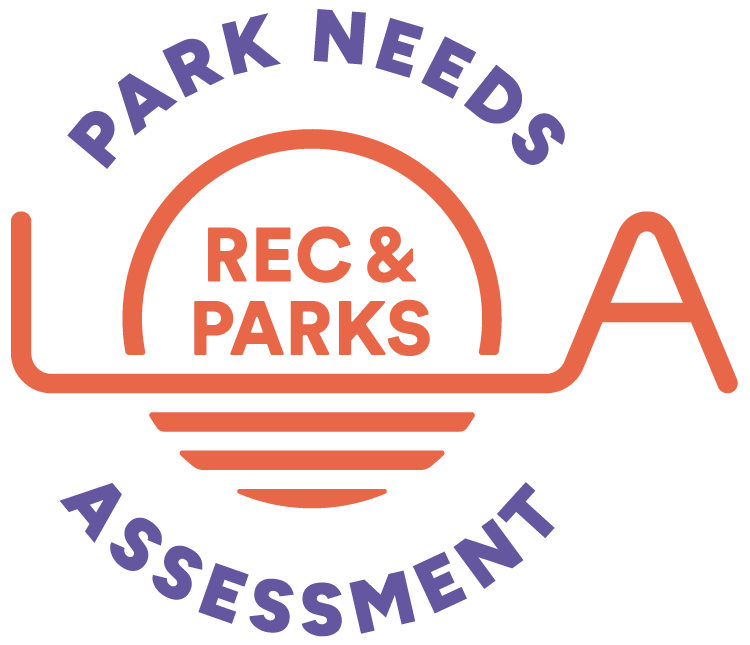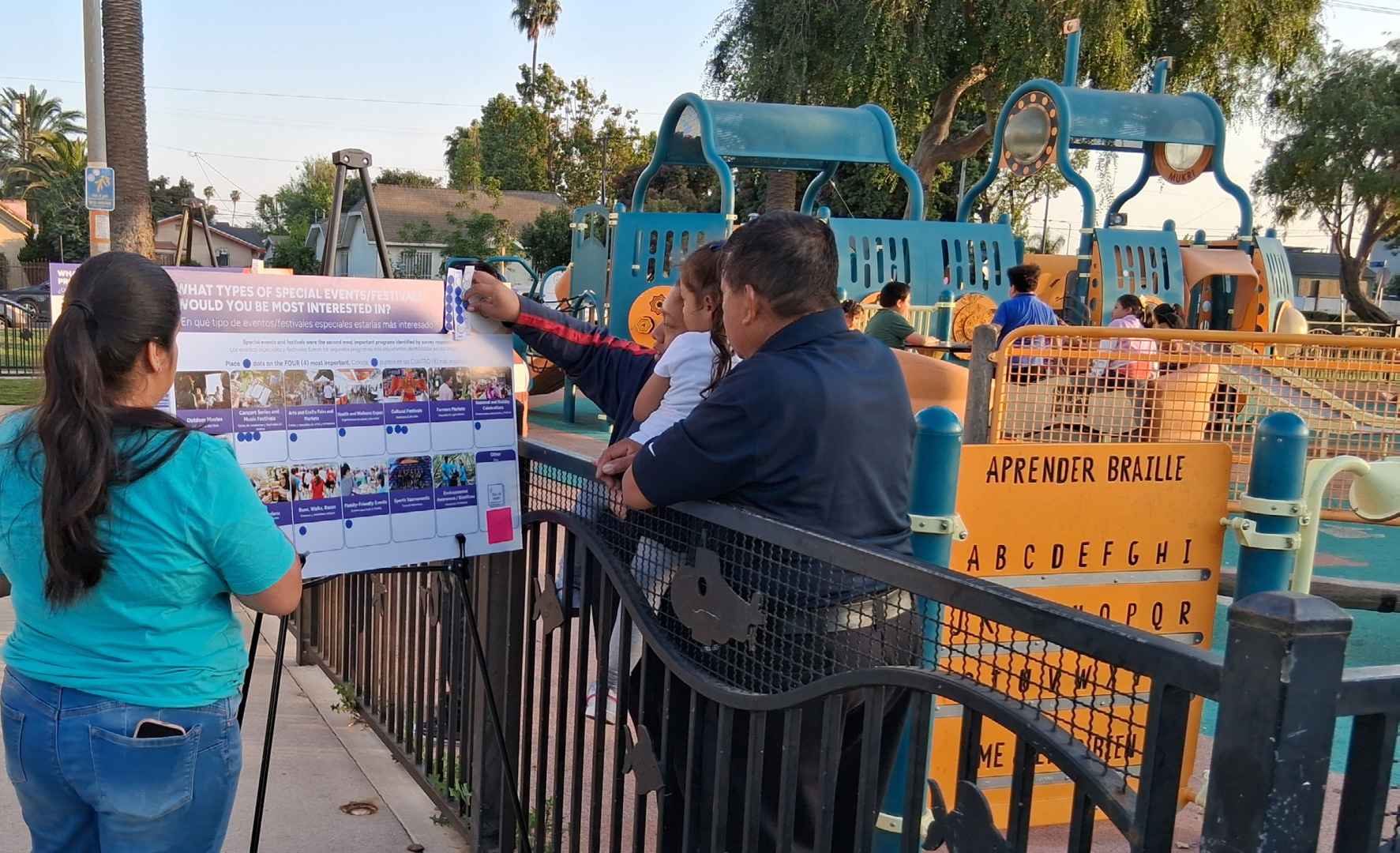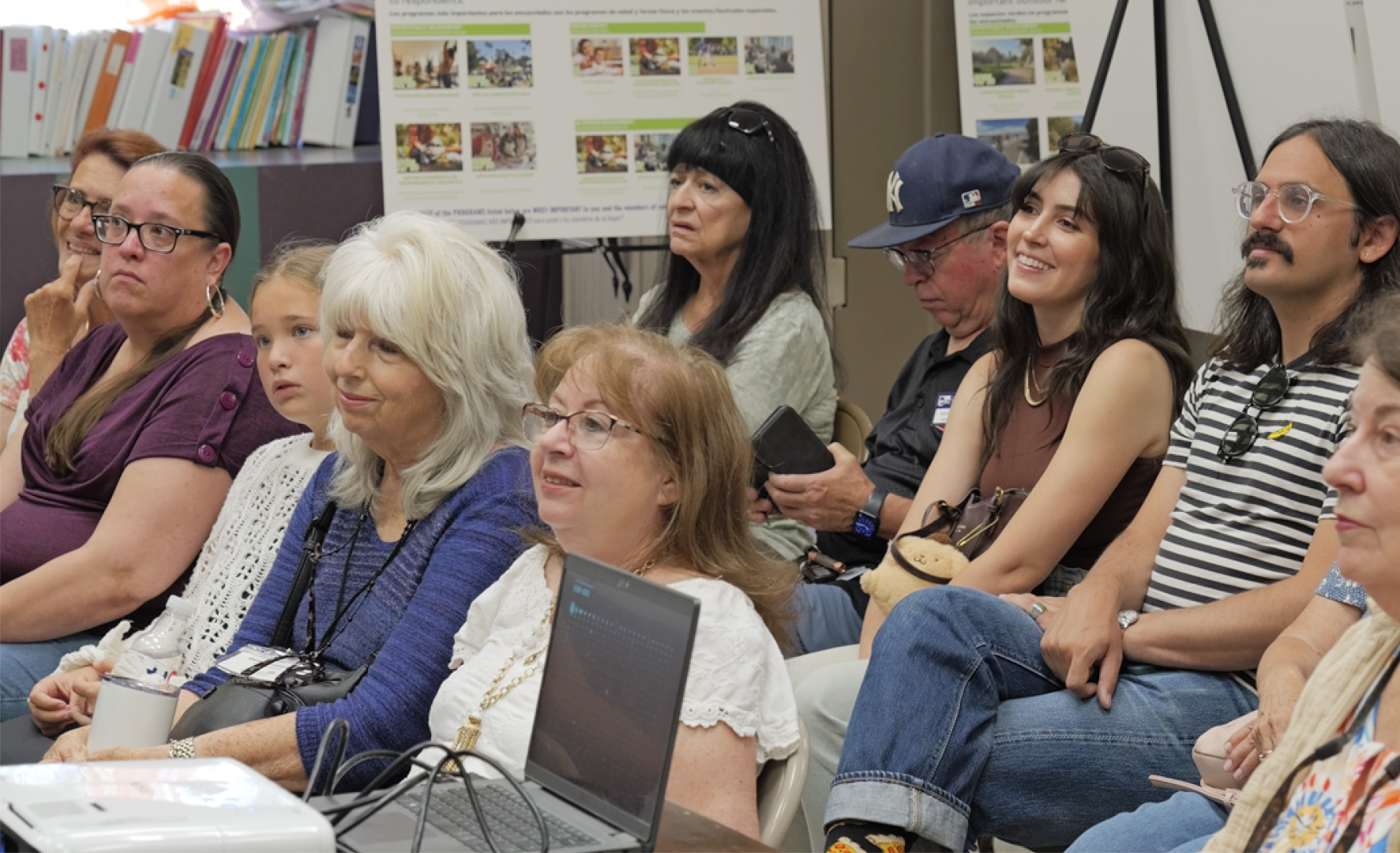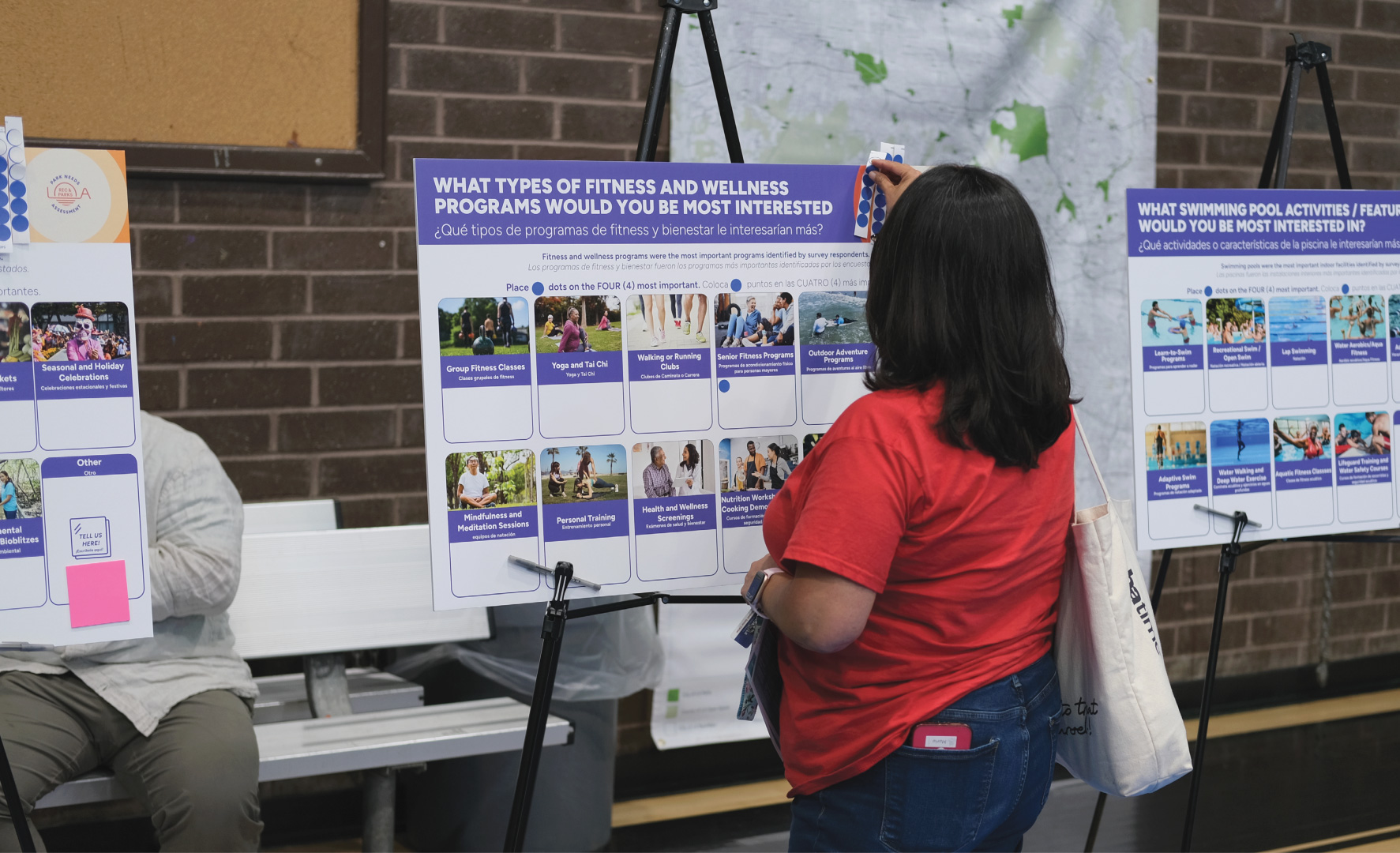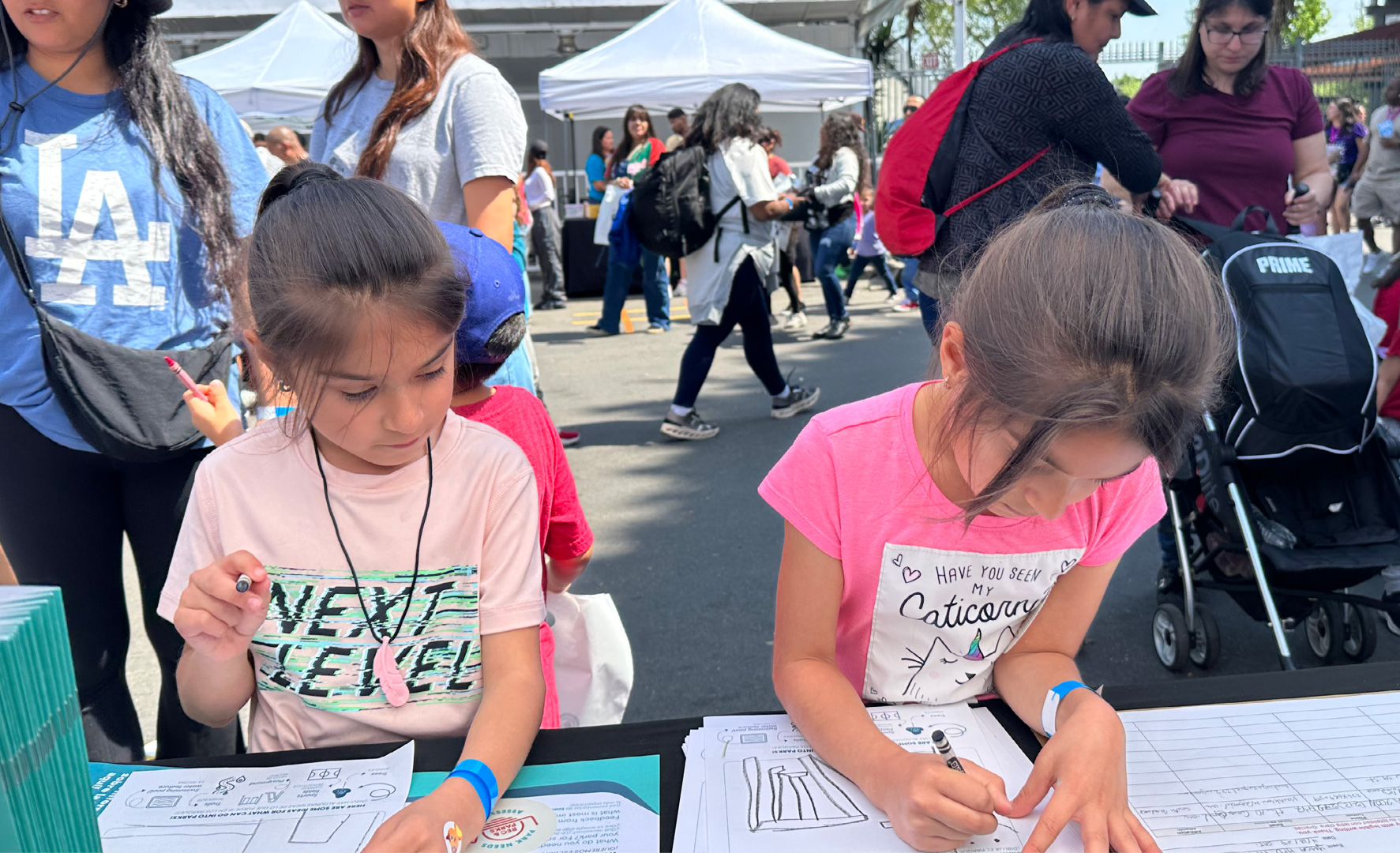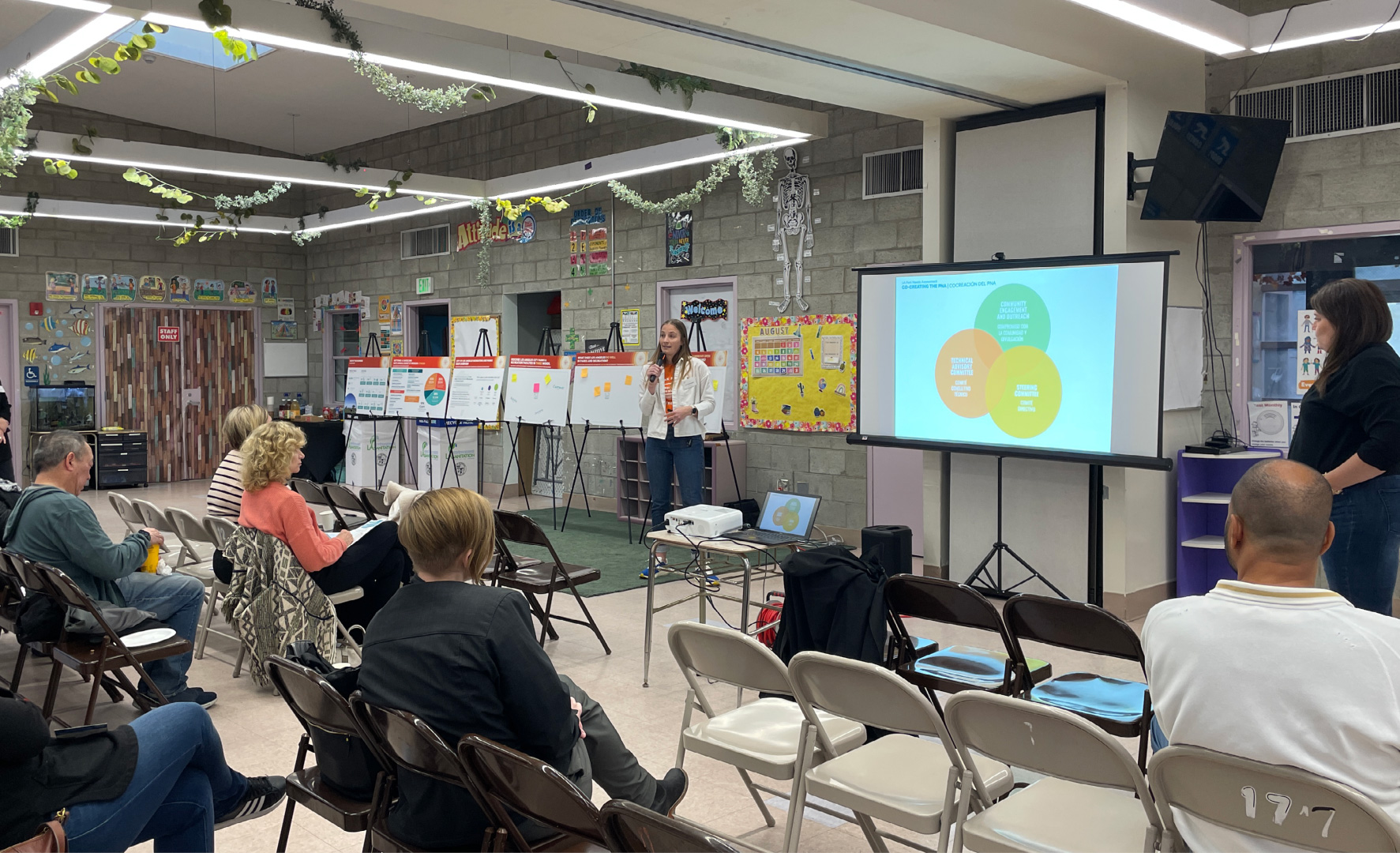Meaningful engagement involves surveys, public meetings, advisory committees, workshops, focus groups, and pop-ups. Feedback from these engagements directly shapes park programming, amenities, and site planning for updated and new facilities. Public involvement should begin during planning, continue through construction, and extend beyond opening to make sure parks continue to serve their communities.
Engagement Guidelines
Community engagement is vital to an equitable, inclusive, and sustainable park system. An equity-driven, community-led approach will not just result in engagement findings that are more reflective of Los Angeles’s diverse population, it will also lead to projects that offer multiple benefits, including:
From design to operations, meaningful community engagement for park projects should aim to create dynamic and inclusive processes where every Angeleno feels welcomed and heard. Engagement at every scale should prioritize communities that have historically been underserved by public investment and underrepresented in park planning, budgeting, and decision-making processes. To implement inclusive engagement processes, they should be developed and implemented in partnership with community members and community based organizations (CBOs), and adapted to reflect and be relevant to specific communities needs.
Metrics can be used not only to define the milestones necessary for a successfully completed project but also the strengths and challenges of the engagement process itself. Creating a plan to routinely collect and report out engagement data during the life cycle of a project not only builds in transparency and trust, but also creates a standard that parks can use to keep themselves accountable to internal and community goals. An inclusive planning and design process binds communities together to be life-long stewards of the recreation and park system.
